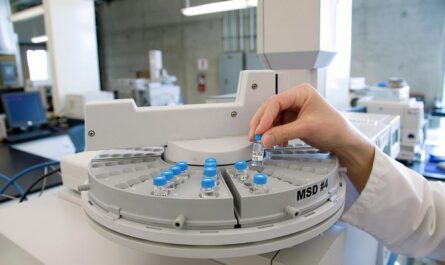Over the past few decades, we have seen tremendous advancements in medical technology that have transformed the way surgical procedures are performed. One such revolutionary technology is surgical robots – computer-controlled robotic devices that assist surgeons in performing minimally invasive surgery with enhanced precision, flexibility and control. In this article, we take a deep dive into the emergence and capabilities of surgical robots and how they are shaping the future of surgery.
A Brief History
The earliest concepts of surgical robots date back to the 1980s when researchers started exploring the potential of robotics and computer-assisted devices to enhance surgical capabilities. One of the pioneering systems was the ROBODOC surgical assistant developed in the late 1980s to help orthopedic surgeons perform hip and knee replacement surgeries with improved accuracy. In 2000, Intuitive Surgical unveiled the da Vinci Surgical System – the first FDA-cleared robotic surgical system that enabled complex minimally invasive procedures through tiny incisions. Since then, several other companies have also developed their own surgical robot platforms. Today, robotic surgery has become a key part of modern healthcare with many benefits over traditional laparoscopic and open surgery.
How Surgical Robots Work
Most current Surgical Robot systems like the da Vinci work as master-slave mechanisms where the surgeon sits at a console to control robotic arms and instruments. They provide the surgeon with a 3D high-definition view of the surgical area through an endoscope. Miniaturized instruments are passed through small incisions and controlled by robotic arms. Surgeons perform intricate maneuvers via hand controls and foot pedals after translating their hand movements Scaled motions and Trembling is filtered out for enhanced control, flexibility and precision compared to traditional laparoscopy. Advanced features also enable wristed instruments, comfortable ergonomics and possibility of telesurgery where remote surgeons can operate from a distance.
Benefits of Robotic Surgery
The enhanced capabilities of surgical robots translate to significant benefits for both surgeons and patients:
– Precision & control: Robotic platforms allow for precisemicro movements and EndoWrist instruments for better surgical dexterity than human hands alone. This facilitates complex procedures.
– Minimally invasive: By enabling procedures through small incisions instead of large open incisions, robotic surgery reduces pain, blood loss, recovery time and scarring for patients.
– 3D HD view: The 3D magnified view provides surgeons depth perception and ergonomic comfort not possible with regular scopes.
– Flexibility: The additional robotic arms enable surgeons to operate independently controlled instruments through a single incision for more flexibility.
– Safety: Tremor filtering and motion scaling improves surgical precision and safety. Telesurgery allows expert surgeons to operate remotely.
– Outcomes: Studies show robotic procedures result in fewer complications, shorter hospital stays and quicker return to normal activities compared to open surgeries.
Widespread Adoption and New Applications
According to estimates, over 1.5 million surgical robot procedures are performed annually worldwide today, majorly for treatments like prostatectomy, hysterectomy, cardiac surgery and many other specialties. The US, Europe and Japan are currently the major markets but adoption is growing rapidly in other regions as well.
With continuous technological improvements, surgical robots are also being applied to an increasing number of complex procedures that were previously considered very difficult or high-risk, like mitral valve repair heart surgery. Miniaturized surgical robot platforms are also being developed for natural orifice translumenal endoscopic surgery (NOTES) procedures without any external incisions.
Future Outlook and Challenges
As robots become more advanced with features like autonomous control, machine learning and augmented reality integration, new opportunities will emerge for improved medical outcomes. Miniaturized single-port and wireless robotic surgical assistant devices may soon enable incision-less ‘scarless surgery’. Telerobotic surgery could help address critical shortages in medical specialties in remote areas.
However, high costs continue to limit widespread adoption. Safety also needs constant validation as more autonomous functions are introduced. Training surgeons remains a challenge due to steep learning curves of new technologies. Data security and algorithmic biases are other aspects that require careful consideration. Despite hurdles, surgical robots are undoubtedly revolutionizing healthcare by helping medical practitioners perform safer, less invasive procedures with better results. As technology matures further, robotics is assured to transform surgery like never before in the decades ahead.
*Note:
1. Source: Coherent Market Insights, Public sources, Desk research
2. We have leveraged AI tools to mine information and compile it



